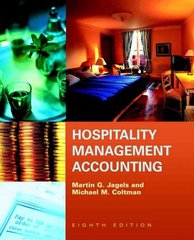On September 1, 1996, the Midwest Telephone Company hired a special agent to seek out the case of losses in coin-operated telephones at several installations.
On September 1, 1996, the Midwest Telephone Company hired a special agent to seek out the case of losses in coin-operated telephones at several installations. In addition, the company asked each supervisor to review with their repair technicians, collectors, and installers, the rules and conduct of the company. These rules include a paragraph on dishonesty and misuse and stealing of company property. The document also included a statement that "...violation of this code of conduct shall result in disciplinary action including possible dismissal."
On September 15, the special agent talked with Sean Smith, a repair technician, about the problem of coin loss in the machines and asked Sean's help in advising how to improve the situation. Sean described the situation and made several suggestions.
Sean Smith is a repair technician on coin-operated phones. He has 19 years of service with the company. On several occasions he has turned in purses and other items of value including lost monies totaling over $300. Sean is known as a responsible member of the community. He is well-liked by his co-workers and is considered one of the leaders of his work group.
On December 9, another repair technician, Hal Lingley, was apprehended with marked coins from a coin machine. Hal had 18 years of experience with the company but had been in that particular job for one month. Upon investigation of the situation, it was found that Hal had not been briefed on procedure for dealing with excess monies from the coin-operated phones and that there could be doubt as to his intent (although he had $14 in market coins on his person). The result was that Hal received a two-week disciplinary layoff. The management felt that their action would emphasize the seriousness of this problem and discourage similar incidents.
Immediately, thereafter, on December 10, the company sent specific instructions to all supervisors to review the conduct codes and procedures for handling excess monies with all the technicians. This was done.
On January 4, 1997, a new procedure for reporting excess monies in the machines was installed, and all repair technicians were instructed as to the procedure. At that time, also, the repair technicians were reviewed on the conduct matter. Both the union and management stressed the importance of the review in order to reduce the likelihood that innocent mistakes would be considered intentional infractions of company policy.
On January 30, Sean Smith was assigned to repair a bank of machines at a nearby military installation. As Sean checked the assignment, his supervisor talked with him about how to handle excess money and was satisfied that Sean knew the procedure. On that same day, Sean was observed by the special agent taking surplus coins from a coin machine he was repairing. The coins were marked, but Sean had them converted into paper money.
On January 30, Sean was called into the central office where he admitted taking $15.80 in coins. He did not give a reason for taking these coins but asserted that for years coin-box repair technicians had reimbursed themselves for their own coins used in testing telephones they had repaired. It was pointed out that such a procedure, even though practiced, was contrary to company policy. In fact, a special instruction on self-reimbursement had been issued a month before which directed the employees to file a voucher for reimbursement of their funds used in testing.
As a result of Sean's action, the union and management representatives must decide what should be done in this case. The union is concerned with protecting its employees and in maintaining some control over the disciplinary policies used by management. Sean's popularity in the union and his seniority as a company worker increased the impact that severe disciplinary action would have on the power and image of the union. The union does not want management to have the power to discipline arbitrarily union members in such case; therefore, they view this case as critical in terms of setting a precedent. On the other hand, management is faced with a loss of control and a loss of face if Sean's case is dismissed without some disciplinary action. In light of past incidences, specifically the case of Hal Lingley, management feels that some significant action is required.
Both the union and management face the threat of a strike by the union or a significant loss of power for one of the parties if the final solution is not agreeable to both parties. A strike would have significant negative consequences for both parties. However, each side is very concerned with retaining power over disciplinary actions. As the union and management representative, you are to decide what action should be taken in Sean's case. If agreement is not reached, both sides face the reality of a strike or of submitting this case to an arbitrator who would make the final decision, thereby removing power from both sides.
Firing Sean
Giving Sean a formal warning
Giving Sean a pay cut
Giving Sean a demotion
Giving Sean a negative performance review
Putting Sean on six month suspension
Making Sean take a leave of absence
Restricting Sean's access to company resources
Increasing Sean's workload
Taking away Sean's company car
Examine the list of options for dealing with Sean's case and rank order your top three choices.
Step by Step Solution
There are 3 Steps involved in it
Step: 1

See step-by-step solutions with expert insights and AI powered tools for academic success
Step: 2

Step: 3

Ace Your Homework with AI
Get the answers you need in no time with our AI-driven, step-by-step assistance
Get Started


